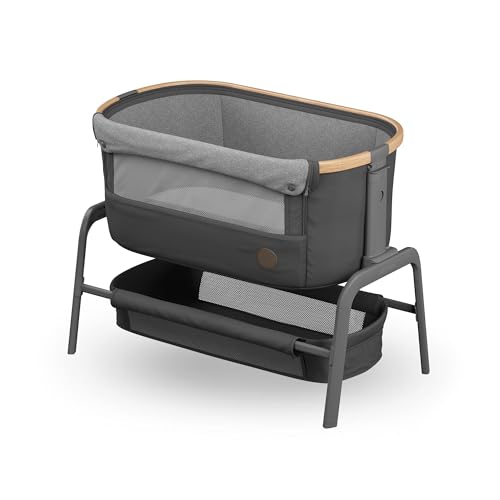Understanding Co-Sleeper Cribs: A Comprehensive Guide for New Parents
In the ever-evolving landscape of infant sleep options, co-sleeper cribs have garnered considerable attention amongst new parents. mouse click the up coming internet site specialized cribs offer an unique bridge between co-sleeping and safe sleep practices, offering advantages that resonate with both caregivers and infants. This short article looks into the intricacies of co-sleeper cribs, detailing their features, benefits, factors to consider, and answering common questions to guide parents in making an informed choice.
What is a Co-Sleeper Crib?
A co-sleeper crib, likewise called a bedside sleeper, is a kind of crib designed to safely attach or sit beside an adult bed. It allows infants to sleep near their parents without the dangers generally connected with adult bed-sharing. These cribs come in various designs, but many share a crucial function: one side that is lower, making it possible for easy reach to the baby while keeping them in their own designated sleeping space.
Key Features of Co-Sleeper Cribs
- Safe Attachment: Designed to firmly connect to the adult bed, ensuring stability.
- Adjustable Height: Height customization choices for seamless positioning next to the adult bed mattress.
- Breathable Mesh Sides: Often geared up with breathable mesh sides to boost air flow.
- Compact Design: Takes up less space than traditional cribs, making them perfect for small spaces.
- Portable Options: Many co-sleeper cribs are lightweight or collapsible, permitting easy motion and travel.
Benefits of Using a Co-Sleeper Crib
Co-sleeper cribs present several benefits that attract new parents, including:
- Enhanced Bonding: Proximity promotes bonding and can ease nighttime feedings and reassuring.
- Streamlined Nighttime Feeding: Parents can quickly feed or relieve their baby without needing to rise.
- Minimized Risk of Bed-Sharing Hazards: Co-sleepers produce a more secure environment than traditional bed-sharing, reducing the threat of suffocation and falls.
- Encouragement of Independent Sleep: Infants have their own sleep space, which promotes independent sleeping practices.
Factors to consider When Choosing a Co-Sleeper Crib
While co-sleeper cribs use many advantages, there are also several factors to consider that parents should examine before purchasing:
- Safety Standards: Always make sure that the crib abides by existing safety policies offered by organizations such as the Consumer Product Safety Commission (CPSC).
- Size Compatibility: Measure the adult bed to guarantee the co-sleeper will fit safely and comfortably together with it.
- Alleviate of Use: Look for designs that facilitate easy operation and availability, specifically throughout nighttime.
- Convertible Options: Some co-sleepers offer the versatility to convert into a standard crib once the child outgrows them, which can be a cost-efficient option.
Top Co-Sleeper Cribs on the marketplace
To assist navigate the abundance of alternatives available, here's a table showcasing some popular co-sleeper cribs together with their standout features:
| Brand | Model | Functions | Cost Range |
|---|---|---|---|
| Arm's Reach | Perfect Arc Crib | Adjustable height, detachable side | ₤ 150 - ₤ 230 |
| Babybay | Original Co-Sleeper | Made from sustainable wood, includes mattress | ₤ 240 - ₤ 300 |
| Chicco | Next2Me Magic | Easy side access, collapsible design | ₤ 200 - ₤ 280 |
| Snuggle Me | Organic Co-Sleeper | Soft, comfortable shapes; portable | ₤ 120 - ₤ 180 |
| HALO | BassiNest | 360-degree rotating, height-adjustable | ₤ 250 - ₤ 350 |
Tips for Using a Co-Sleeper Crib
- Positioning: Place the co-sleeper beside the bed at the same height level for security.
- Follow Safe Sleep Practices: Ensure the crib is set up according to standards to decrease threats. This includes preventing loose bed linen and keeping the mattress firm.
- Frequently Check Security: Periodically inspect the attachment in between the co-sleeper and the adult bed to ensure it remains secure and steady.
Frequently Asked Questions (FAQs)
1. Are co-sleeper cribs safe?Yes, when
used according to the manufacturer's guidelines and safety guidelines, co-sleeper cribs are considered a safe option to conventional bed-sharing.
2. The length of time can my baby use a co-sleeper crib?Most co-sleeper cribs are designed for infants as much as 5-6 months old, but check specific product specifications for age and weight limitations. 3. Do co-sleeper cribs come with mattresses?Many co-sleeper cribs come with consisted of bed mattress, however validate this before purchase. Guarantee any extra bed mattress meets safety standards. 4. Can a co-sleeper crib be used for twins?There are co-sleeper cribs developed for twins, but these models may be less common. Always examine the size and weight limitations. 5. Should I use a co-sleeper crib for naps?Absolutely! Co-sleepers work well for both nighttime sleeping and naps, supplying a consistent sleep environment for infants. Co-sleeper cribs offer a reliable and safe compromise
for new parents excited to keep their infant close while maintaining a protected sleeping environment. By understanding their features, advantages, and
security considerations, parents can make educated decisions that accommodate their household's requirements. Whether you're searching for benefit during nighttime feedings or a method to develop a strong early bond, a co-sleeper crib might just be the best option for you and your little one.

